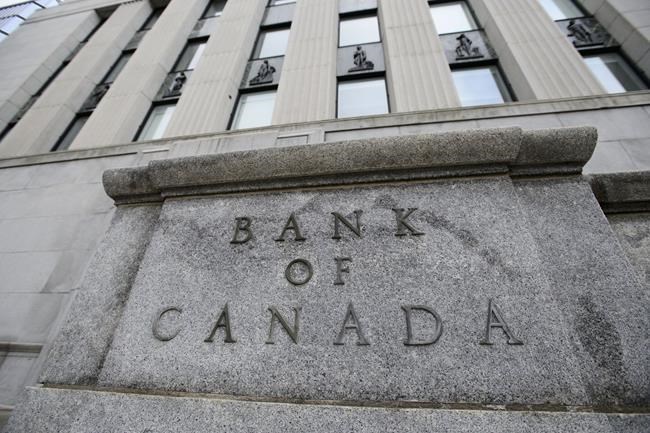OTTAWA — A senior Bank of Canada official says the pandemic has made assessing job market conditions and inflationary pressures more difficult, creating further uncertainty around when inflation will return to its two per cent target.
The country has recovered the three million jobs lost at the outset of the pandemic, but pockets of weakness remain in high-contact sectors such as retail and long-term unemployment levels are elevated.
Deputy governor Lawrence Schembri said in a speech Tuesday that there is still a ways to go before the labour market reaches its peak capacity and that uncertainties about trends in the market remain.
Schembri told the Canadian Association for Business Economics that it's the central bank's goal to support strong employment and output growth by keeping inflation low, stable and predictable.
He said that goal has become more difficult because of how the pandemic has accelerated changes in the job market, such as an aging labour force and the digitalization of work.
Schembri also said a tight labour market may cause more inflation pressures than previously believed.
"It is our responsibility to meet the challenges posed by these labour market uncertainties," he said. "Canadians are counting on us to continue to innovate and strengthen the practice of monetary policy. And we are."
The speech provided an additional window into the central bank's thinking on when and how fast it could raise its trendsetting policy rate and came a day ahead of the next inflation reading.
The annual inflation rate in September hit an 18-year high when the consumer price index registered a year-over-year increase of 4.4 per cent, pushed higher by snarls in supply chains, bumps in prices at the gas pumps, and comparisons to lows seen a year ago.
Many of those issues didn't dissipate through October.
BMO chief economist Douglas Porter said he expects to see the annual inflation rate hit 4.7 per cent in October, which would be the fastest pace since 1991. Statistics Canada is scheduled to releases its report Wednesday morning.
While the central bank is mandated to keep inflation at the two per cent midpoint of an inflation-control target range, its marching orders from federal government are up for renewal in the coming weeks.
New policy guidance could include a dual mandate, measuring employment levels as well as inflation. The Conservatives have warned the Liberal government not to add to the bank's mandates.
CIBC chief economist Avery Shenfeld wrote in a recent analysis that he expected more specific language added to the bank's mandate that keeping inflation on target would coincide with full employment.
He wrote that to get to full employment — Schembri said it would not mean "zero unemployment" but rather closing some existing gaps — the Bank of Canada may want to slowly raise rates to let the jobless rate creep lower.
The Bank of Canada has said it expects to be able to start raising its target overnight rate in the second quarter of 2022. Schembri said Tuesday a hike could be anywhere between April and September because of continued uncertainty about when the economy will be ready to handle higher rates.
TD senior economist Sri Thanabalasingam said Schembri's speech underlines recent comments from the bank about the uncertainty of its own outlook, suggesting "a more reactionary central bank" that will "adjust to unexpected shocks to its narrative" about the economy.
This report by The Canadian Press was first published Nov. 16, 2021.
Jordan Press, The Canadian Press



